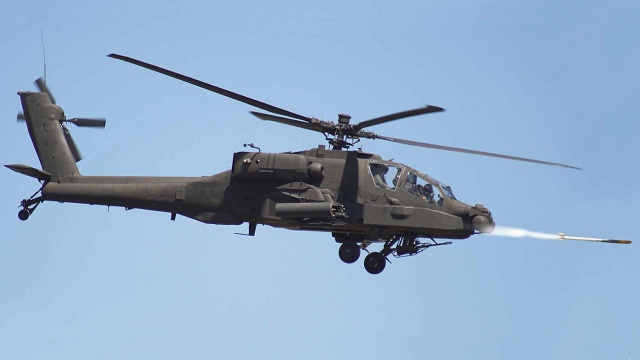The US Army has ordered its first batch of 70mm laser-guided rockets from BAE Systems for its Boeing AH-64D Apache Longbow “for immediate deployment” following the Advanced Precision Kill Weapon System’s qualification on the helicopter gunship last year.
APKWS converts standard, unguided rockets into light and relatively cheap precision-guided munitions by adding BAE's Distributed Aperture Semi-Active Laser Seeker (DASALS) and wing section between the warhead and the rocket motor.
Although conceived as an army programme, the US Navy and Marine Corps have been pursuing the APKWS for the Bell Helicopter AH-1, UH-1 and more recently the maritime Sikorsky MH-60.
BAE director of precision guided systems David Harrold says fielding on the Apache brings the army back into the programme, and boosts APKWS’ chances of being adopted by international AH-64 operators. There are more than 750 Apaches in the active army inventory and another 250 foreign-operated units, according to Flightglobal’s World Air Forces 2015 report.
“This has been a journey with the army where we’ve been doing testing and demonstrations and qualifications and things, but they bought these for operational use,” Harrold tells Flightglobal at the Association of the United States Army conference in Washington this week. “The army is trying to figure out what their long-term plan now is for acquisition.”

BAE Systems
APKWS has been demonstrated on 15 platforms, and BAE is also pursuing integration with the US Air Force’s F-16 and A-10 combat aircraft as an additional close-air-support weapon. Typical DOD launch tubes carry 19 or 7 rockets, and each APKWS unit is about one-third the cost and weight of the Lockheed Martin Hellfire missile, says Harrold.
“This was originally created to fill the gap between an unguided 2.75in rocket, like a Hydra, and a much larger anti-armour weapon system, like Hellfire. It’s never intended to replace them,” he says. “It’s low-collateral-damage and it’s more appropriate for some of the target sets than Hellfire is.”
BAE has been exploring different and larger warhead options than the standard high-explosive M151 Hydra warhead, and the company is also pursuing integration with the Bell-Boeing V-22 Osprey and more unmanned aircraft – building on its experience with the Northrop Grumman MQ-8B Fire Scout.
APKWS has been used in combat with the marines since 2012, and the first international sale is to Jordan for its CASA-235 light gunship.

BAE Systems
Source: FlightGlobal.com











































